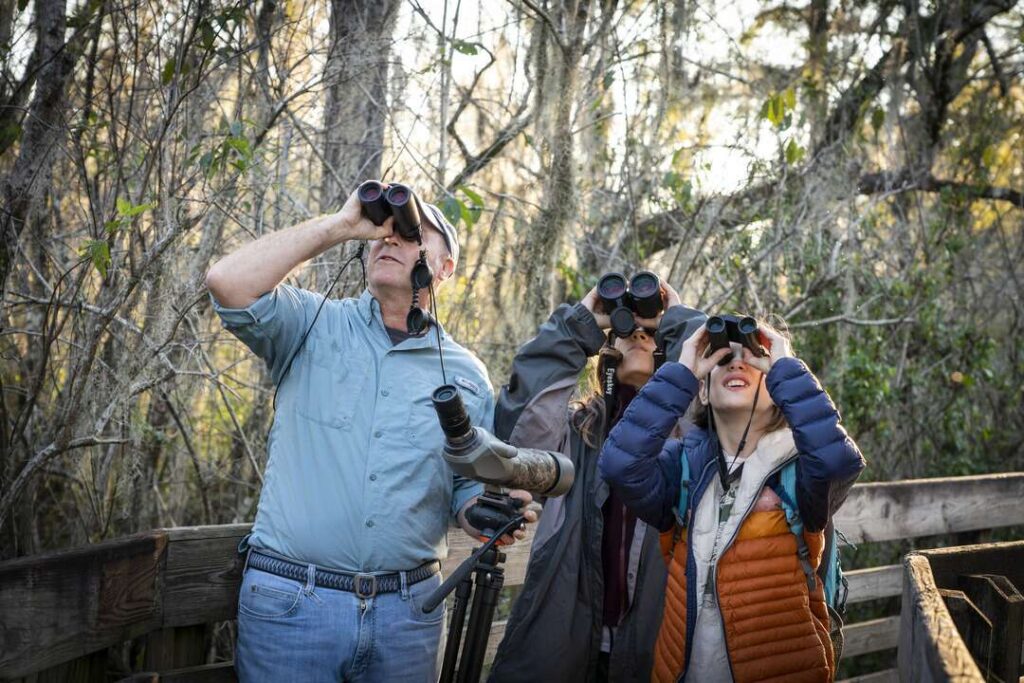By BLANCHE HARDY
The South Florida Water Management District (SFWMD) recently released its annual 2024 South Florida Environmental Report (SFER), underscoring Everglades restoration and water quality progress across Central and Southern Florida.
This year’s SFER notes record hydration and improvement of water quality, significant momentum for sending more water south, groundbreakings and ribbon cuttings of major Everglades restoration projects, and other important milestones for the resiliency of the region’s water resources and ecosystems.
The 2024 SFER also contains documentation on restoration, scientific and engineering accomplishments over the past year in the Kissimmee Basin, Lake Okeechobee, the Everglades, and coastal areas. The report details Water Year 2023 (May 1, 2022–April 30, 2023) and SFWMD Fiscal Year 2023 (Oct. 1, 2022–Sept. 30, 2023).
The three-volume report includes findings derived from regional monitoring and research projects, highlights key financial information during the 2023 Water Year reporting period, an annual update on the project status during Fiscal Year 2023, and planning for Fiscal Year 2024 for the ten annual reports required of all water management districts and reporting and fulfilling various state and federal permit-related reporting requirements.
Among the report’s highlights detailed by the District and partners is progress on the Caloosahatchee (C-43) reservoir. A newly completed pump station will move water from the Caloosahatchee River (C-43 Canal) into an 18-square-mile reservoir helping to reduce harmful flows of water from reaching the downstream Caloosahatchee Estuary.
The Caloosahatchee Reservoir provides water storage and supports appropriate salinity levels in the Estuary. The reservoir will reduce flows from Lake Okeechobee and the local watershed during the wet season and will provide beneficial freshwater flows to the estuary during the dry season. The structure will hold approximately 170,000 acre-feet of water equivalent to roughly 55 billion gallons. SFWMD reports the reservoir is expected to begin initial operations in 2025.
The Taylor Slough Flow Improvement Project in Everglades National Park is complete and will increase the flow of clean, fresh water through the park and into Florida Bay. Fresh water is needed to balance salinity levels and promote ecological health. The Taylor Slough Flow Improvement Project was completed in just four months. The project included the installation of 18 culverts at nine locations along a 3.2-mile section of Old Ingraham Highway in the southeastern part of Everglades National Park. The resulting distribution of freshwater flow will restore natural plant communities and wetlands. Taylor Slough has historically been a major contributor of fresh water to Florida Bay.
The District broke ground on the Biscayne Bay Coastal Wetlands (BBCW) Project – Cutler Wetlands Component. Construction began on the Cutler Flow Way Phase 1 Pump Station S-701. Upon completion, the S-701 Pump Station will deliver fresh water from the C-1 Canal to rehydrate coastal wetlands of Biscayne Bay.
The project will improve coastal resiliency and water quality in this area of Miami-Dade County. The Cutler Wetlands Component is the final component of the Biscayne Bay Coastal Wetlands Project. All components of the BBCW Project are expected to be complete by 2026.
The Lake Okeechobee Watershed Restoration Project (LOWRP) is also making progress, according to the District. SFWMD conducted a Feasibility Study for the North of Lake Okeechobee Storage Reservoir (LOCAR) Section 203 Study. The Feasibility Study explored opportunities for aboveground water storage north of Lake Okeechobee with an estimated water storage capacity of 200,000 acre-feet. The study area covers a large portion of the Lake Okeechobee Watershed north of Lake Okeechobee and will provide ecological benefits to the lake and the northern estuaries.
The reservoir is intended to store excess water in the northern watersheds and release the excess water at times when it is beneficial for the region. This increased storage capacity will reduce the duration and frequency of both high and low water levels in Lake Okeechobee. With these improvements to Lake Okeechobee levels, the reservoir will help reduce the likelihood of harmful discharges from Lake Okeechobee to the northern estuaries sensitive to algal blooms.











